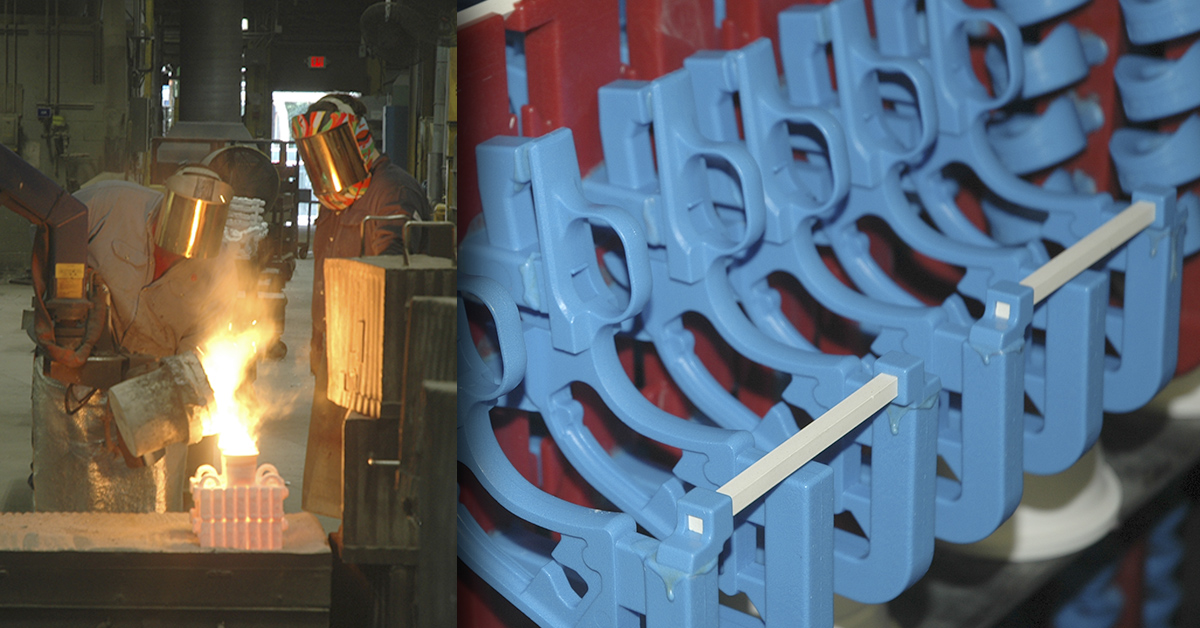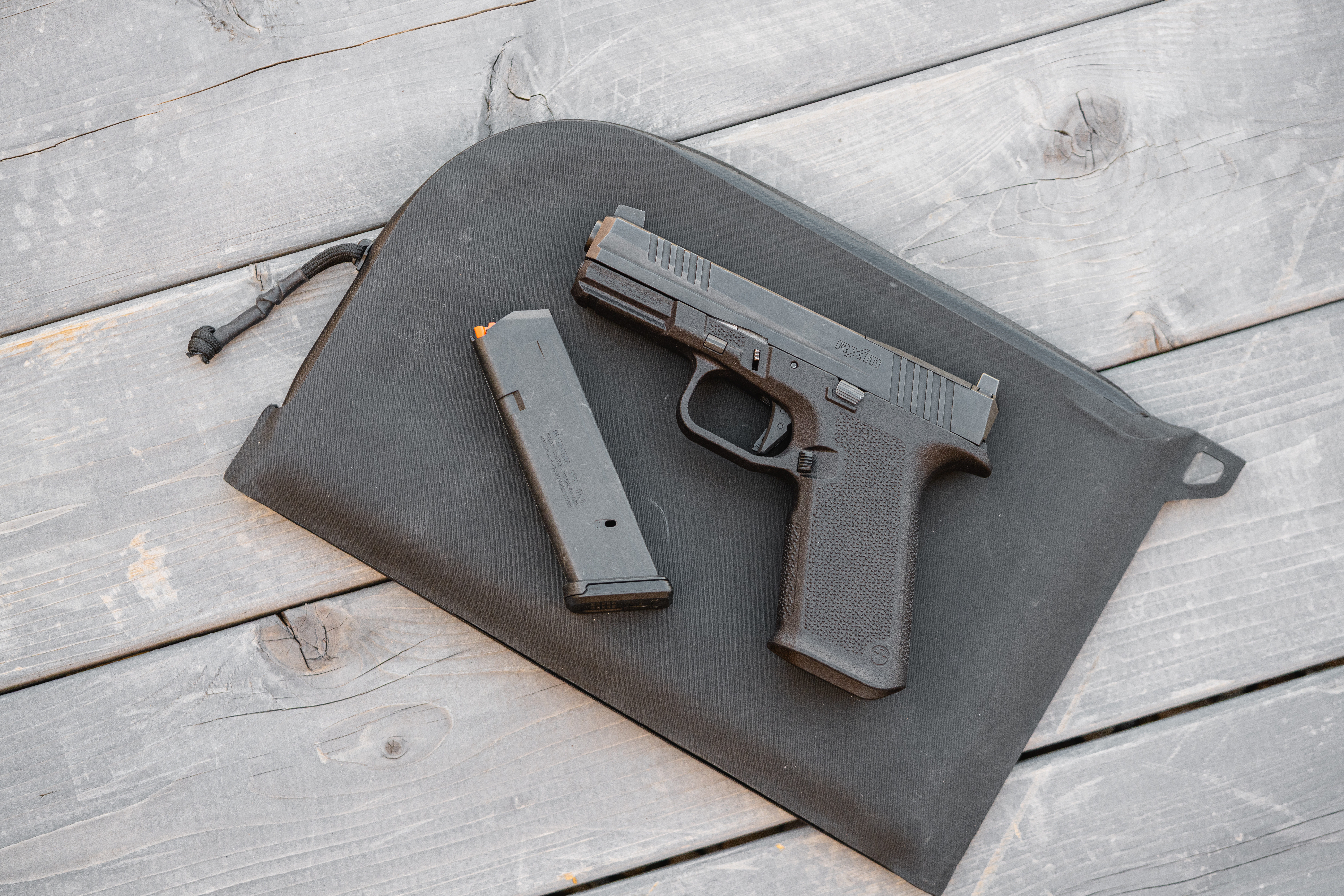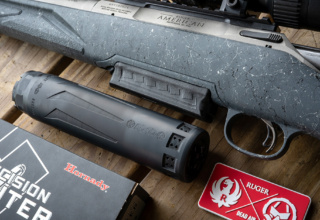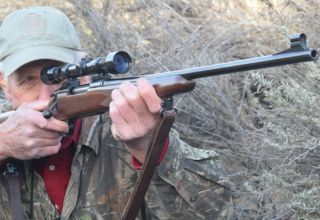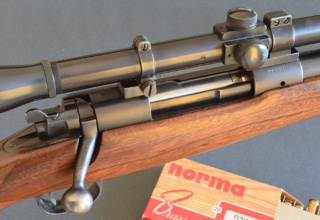Profitable pistols have buoyed its fortunes of late. Were they Bill Ruger’s best loves?
by Wayne van Zwoll
I met him just once, in his office. He extended his hand as if to an old friend. I was humbled. Bill Ruger had many demands on his time, and a company to run.
That company took root 75 years ago, when he was 33. Born in Brooklyn, June 21, 1916, William Batterman Ruger grew up with firearms and by age 12 had his first rifle. His father, Adolph Ruger, owned a lodge on Long Island, where Bill discovered waterfowling. He competed on the school shooting team. Then, with a friend, he split the $9.75 cost of a Krag-Jorgensen rifle.
Fascinated by firearms design, Bill began collecting Sharps and Springfield rifles, Colt and Luger handguns, and as a teen built a prototype of a light machine gun! At the University of North Carolina, he fashioned a self-loading rifle from a lever-action Savage 99, an achievement noted in American Rifleman. Bill wed Mary Thompson in 1939 and landed a job at Springfield Armory for $130 a month. But soon he and Mary, with a young son, moved back to North Carolina. By 1945, when armistice cancelled any U.S. Army interest in his machine gun, Ruger was earning $100 a week at Auto Ordnance and giving thought to Douglas Hammond’s idea of building a gun of sheet metal.
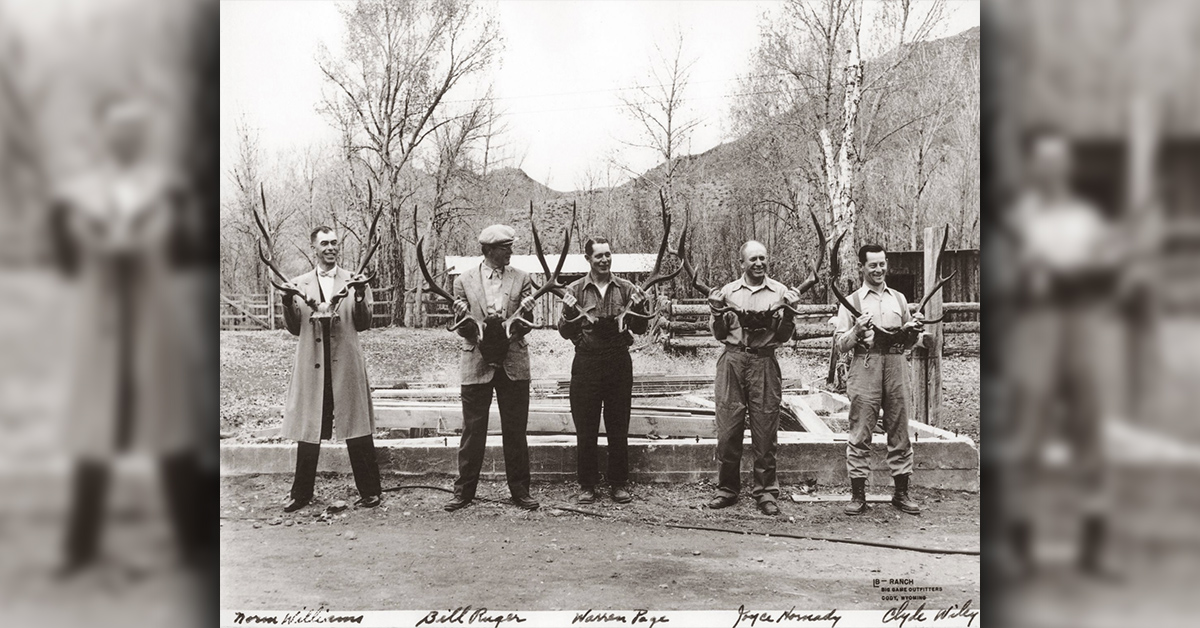
But his first business venture was the manufacture of carpenters’ tools. Their high quality saddled him with high production costs. Lofty retail prices slowed sales. The business was stalled when, from out of nowhere, a graduate of Yale Art School offered him cash to start a firearms company. Alex Sturm was a writer and a painter who shared Ruger’s passion for guns. While $50,000 would barely crack the door to heavy manufacturing, Ruger jumped at the chance to pursue his dream. “We’ll start with something that’s cheap to make and easy to sell,” he told his partner.
The first Ruger, a .22 handgun with a Luger/Colt Woodsman profile, appeared in 1949, at $37.50. Despite its modest price, it pointed well and functioned reliably. Firearms authority Julian Hatcher, who’d mentored Bill, gave the stamped-steel pistol a glowing review in American Rifleman. Orders flooded in.
Tragically, Alex Sturm’s health soon failed. He passed in 1951, still in his 20s. To commemorate his friend and benefactor, Bill Ruger changed the “red griffin” emblem on the pistol’s grip to a black one.
The company grew as Ruger came up with more winning designs. He had an unerring sense of what shooters wanted. As importantly, he pioneered better ways to build and market firearms.
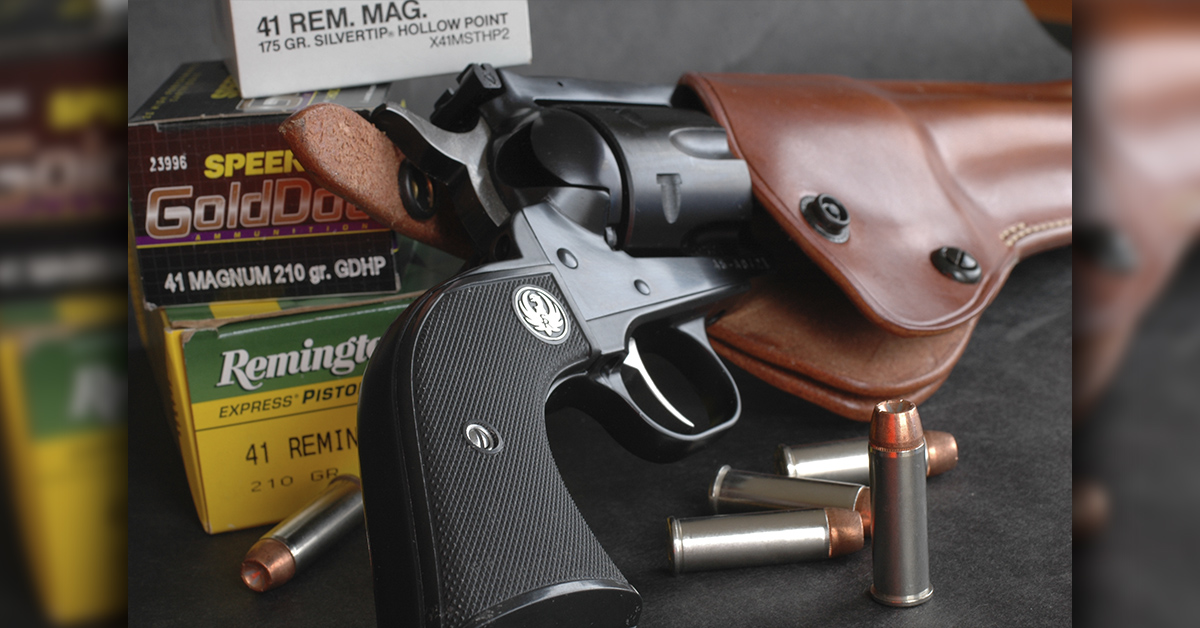
On the heels of his autoloading .22 pistol, Bill tapped a post-war fascination with the Wild West. Sunny economic times had brought television sets into living rooms country-wide. Shifty-eyed bandits in black Stetsons and square-jawed lawmen in white galloped across the screen, blazing away at each other with Winchester lever rifles and Colt revolvers. To the dismay of Colt enthusiasts, the Hartford company had dropped its Single Action Army in 1940. Costly to manufacture, it was unlikely to reappear anytime soon. Bill Ruger decided to build a better single-action than Colt’s and sell it for less. In 1953, he unveiled a “spittin’ image” of the SAA in .22 Long Rifle. Its coil springs were sturdier than the flat springs of the Colt. It was also the first Ruger with investment-cast parts. At $63.25, the Single-Six sold to the walls. It sired a lightweight, alloy-frame model (1956 to ’59), then a convertible with .22 LR and WMR cylinders.
Ruger announced the centerfire Blackhawk SA in .357 Magnum in 1955, the .44 Magnum Super Blackhawk next. Other chamberings — .30 Carbine, .327 Federal, .41 Magnum, .44 Special, and .45 Long Colt — fed steady demand. The petite .22 Bearcat SA lasted for 16 years after its 1958 debut. The single-shot Hawkeye, a Peacemaker look-alike in .256 Winchester, came and went in ’63.
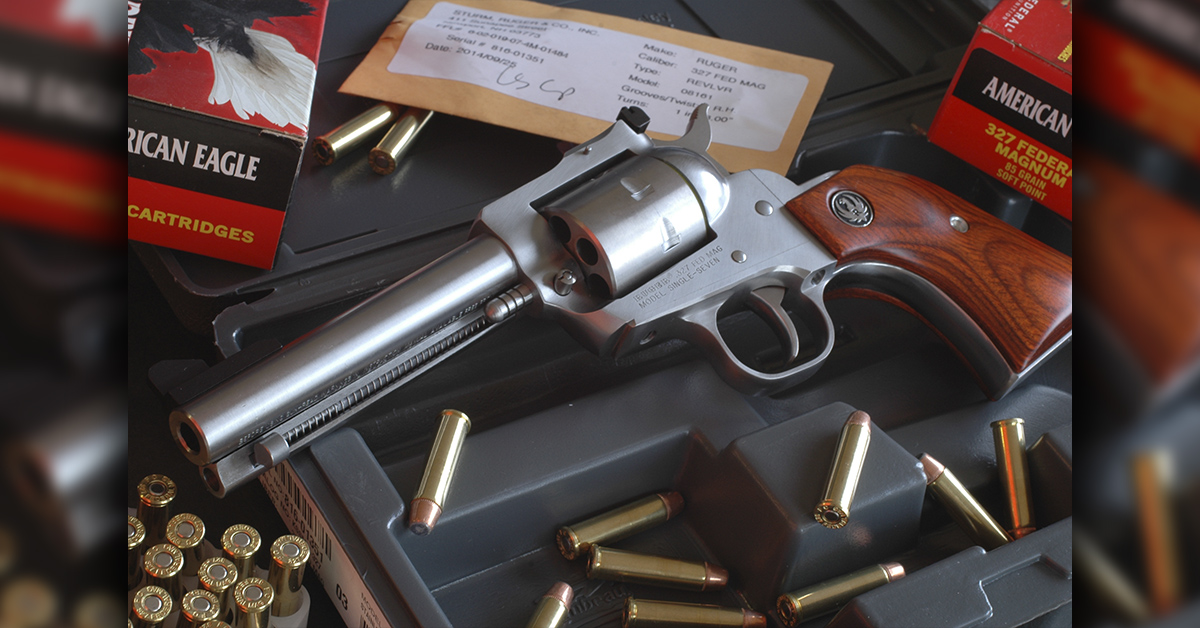
Transfer bars replaced earlier firing pins on “New Model” Blackhawk and Single-Six revolvers in 1973. Double-action Speed Six revolvers arrived about that time, in .38 Special, 9mm, and .357 Magnum. With Security Six revolvers, they gave way to the DA GP-100 in 1986. When the SP-101 appeared in ’89, Ruger was six years into production of the DA Redhawk in .357, .41 and .44 Magnum, and .45 Colt. The Super Redhawk, with extended frame, showed up in 1987 in .44 Magnum, .454 Casull, and .480 Ruger.
Ruger’s SA Vaquero, announced in 1993, served Cowboy Action shooters in .44-40 and .45 Colt, also in .357 and .44 Magnum. Over the next couple of decades, Ruger revived the Bearcat and added new chamberings in existing revolvers. New features appeared too — Bisley grip frames, cylinders with greater capacity, different sights…
Bill Ruger didn’t ignore long guns. His Deerstalker .44 Magnum carbine, introduced in 1959 at $108, was nimble and cute, with an 18 ½-inch barrel and a flush rotary magazine. Ruger dropped it in 1985.
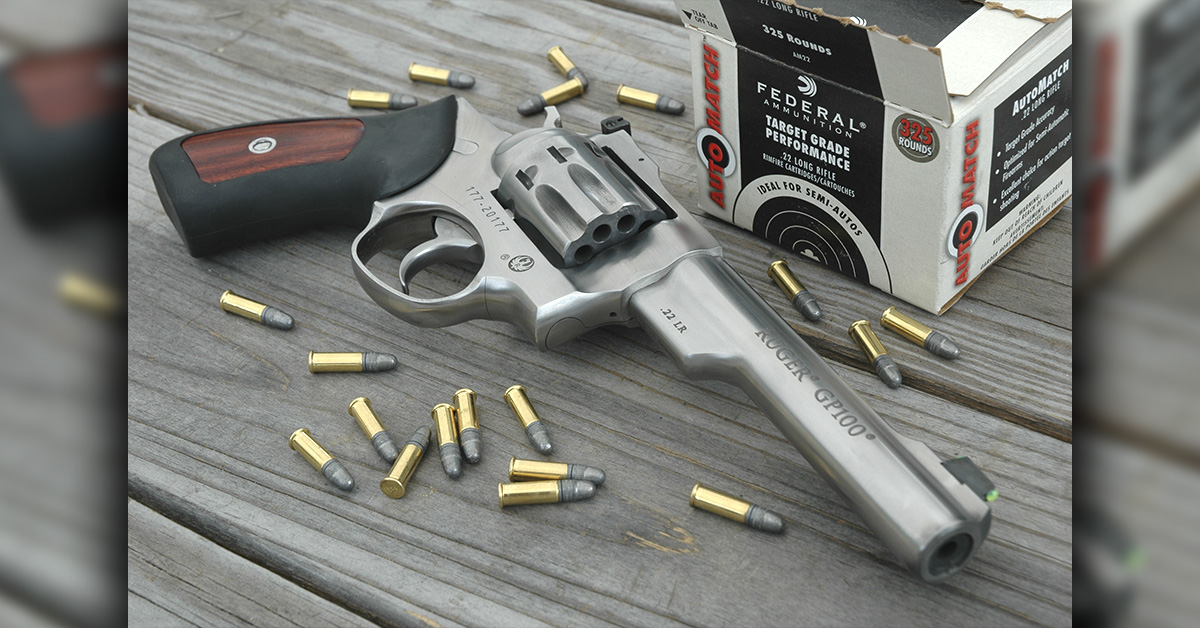
Ruger’s top-selling rifle by far is essentially a rimfire version of the Deerstalker. The spool-fed, autoloading 10/22 showed up in 1964. It became a runaway top seller and later sparked a cottage industry in custom-built rifles and aftermarket parts. Some years ago, I was told Ruger had built more than seven million of these reliable rimfires. Their eye-popping production rate makes any update pointless. “We can build one every 30 seconds,” said Ron Nelson, who supervises 10/22 manufacture. “Two rifles a minute. That’s the rate to meet peak demand. Two shifts, 20 hours each day.” He concedes the cell doesn’t always steam at full throttle. “But this little rifle sells faster than penny lemonade in August!”
MIM (metal injection molding) changed 10/22 production a bit. Metal particles, molded to shape under pressure, require little if any final machining, saving time and labor. “About eight years ago,” Ron recalled, “we replaced alloy guards with polymer. Purists whined; but we tested the polymer by driving pickups over 10/22s on pavement. No breakage.”
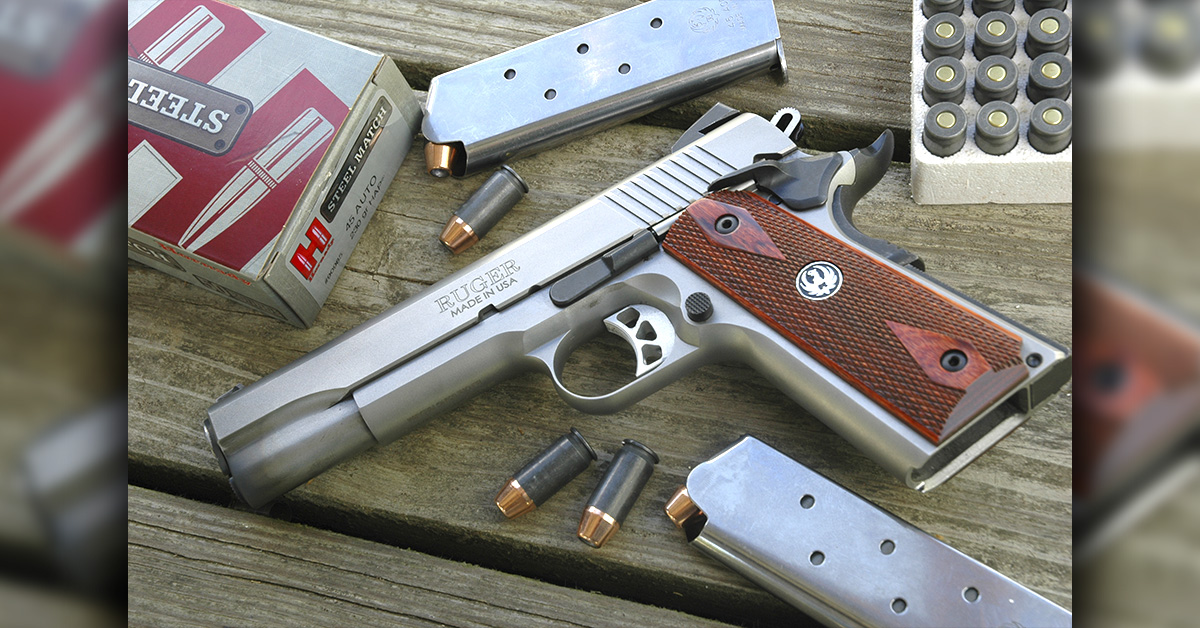
Chambered for the .22 WMR (1999 to 2006) and .17 HMR (in 2004), the 10/22 is currently listed only in .22 Long Rifle. Ron said the .22 WMR challenges engineers. “The bolt must be heavy, so we used tungsten — tough metal to machine. After we replaced die-cast alloy receivers with steel, those long-action rifles worked well. But their production costs forced retail prices high enough to snuff sales.”
In my view the Ruger No. 1 single-shot, introduced in 1966, is one of the most elegant rifles ever built in the U.S. Unmistakably carrying genes of the British Farquharson, it has a lighter, slimmer action. The A and S versions paired an Alex Henry forend with light 22-inch and stiff 26-inch barrels. Both had iron sights, as did the big-bore No. 1-H in “stopping-rifle” chamberings. B and V versions, with 26-inch barrels, had forends of ordinary profile and no sights. The first No. 1s featured fine walnut. The cartridge roster grew to include a host of popular and obscure numbers, .218 Bee to .458 Lott. A plain carbine, the No. 3, was produced in six chamberings, .22 Hornet to .45-70, from 1972 to ’87. The No. 1, alas, is all but discontinued at this writing. A contact at Ruger concedes no No. 1s have been built for months. I visited the giant Newport, New Hampshire factory soon after Ruger had slashed production of this rifle. The No. 1 cell was bedroom-size and staffed by just two workers hand-fitting parts.
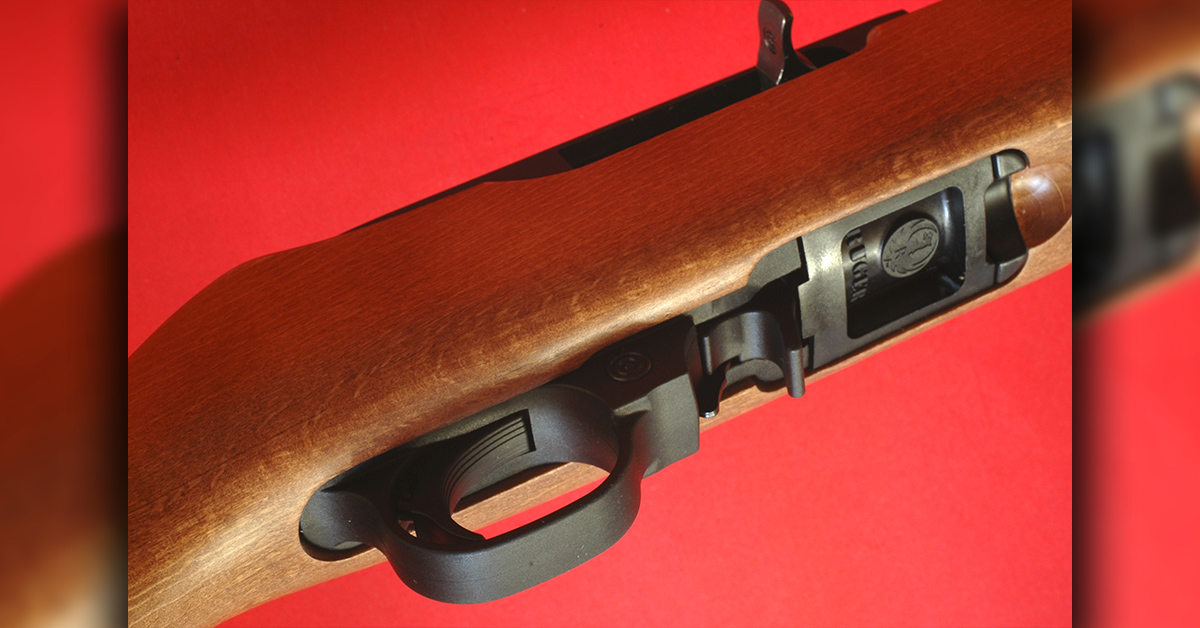
Ruger’s bolt-action Model 77 has been its flagship hunting rifle since 1968. An overhaul in 2007 yielded the 77 Hawkeye, with trimmer lines. Available in walnut, synthetic, and laminated stocks, it has a non-rotating extractor that, in Hawkeyes, delivers controlled-round feed. Its receiver is machined to accept Ruger rings directly. Several versions and a long list of chamberings suit it to many tasks. There’s a 77 in 6.5 Creedmoor in my rack, plus a “Compact” in .300 RCM. Also, a 9.3×62.
A little over a decade ago, I bought a 77 Hawkeye African in 9.3×62, because I like the cartridge, and because the rifle is traditional and handsome. The stock is checkered walnut. A crossbolt strengthens it behind the recoil lug mortise. The Mauser claw works with a blade ejector. Fire control: a three-position side safety and Ruger’s LC6 trigger. A mid-weight, 23-inch, hammer-forged barrel has a useful rear sight on an island, a barrel-band front sight. The four-shot magazine is secured by a hinged floorplate. This 8-pound rifle points as if it were lighter. Alas, Ruger has taken the 9.3×62 off the African’s cartridge roster.
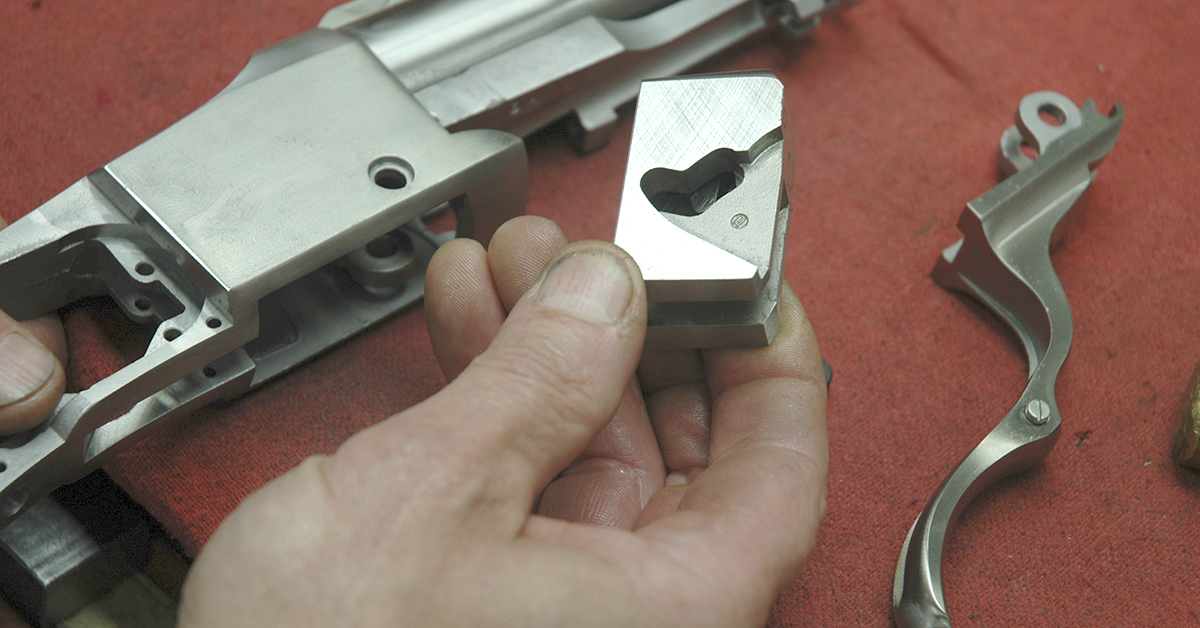
An alternative to the Model 77, the Ruger American, appeared in 2012. An inexpensive but well-engineered rifle, it’s since become hugely popular. The original, standard version is of chrome-moly steel with a slim 22-inch barrel, a tang safety, and an adjustable trigger with a shock-proof tab. A detachable spool magazine fits flush. The full-diameter three-lug bolt has a short 70-degree lift. While low-lift bolts can be hard to cycle (cam angles for primary extraction are steep), Ruger fitted this bolt with dual cocking cams to ease cycling. The American has what Ruger calls “Power” bedding. (Actually, it’s “PWR,” for Dwight Potter, Scott, Warburton, and Bruce Rozum, who developed it.) Twin guard screws thread steel V-blocks in the synthetic stock to pull the tubular receiver so angled mortises in its belly mate with the blocks. The American has consistently shot above its price point for me. Ruger’s fix for a low stock comb: a lace-on cheek-pad. An American-made pad, though, would have cost $40. So, my rifle shipped without a cheek-pad. Ruger decided to furnish one request at no charge, or a U.S.-made pad at a discounted price.
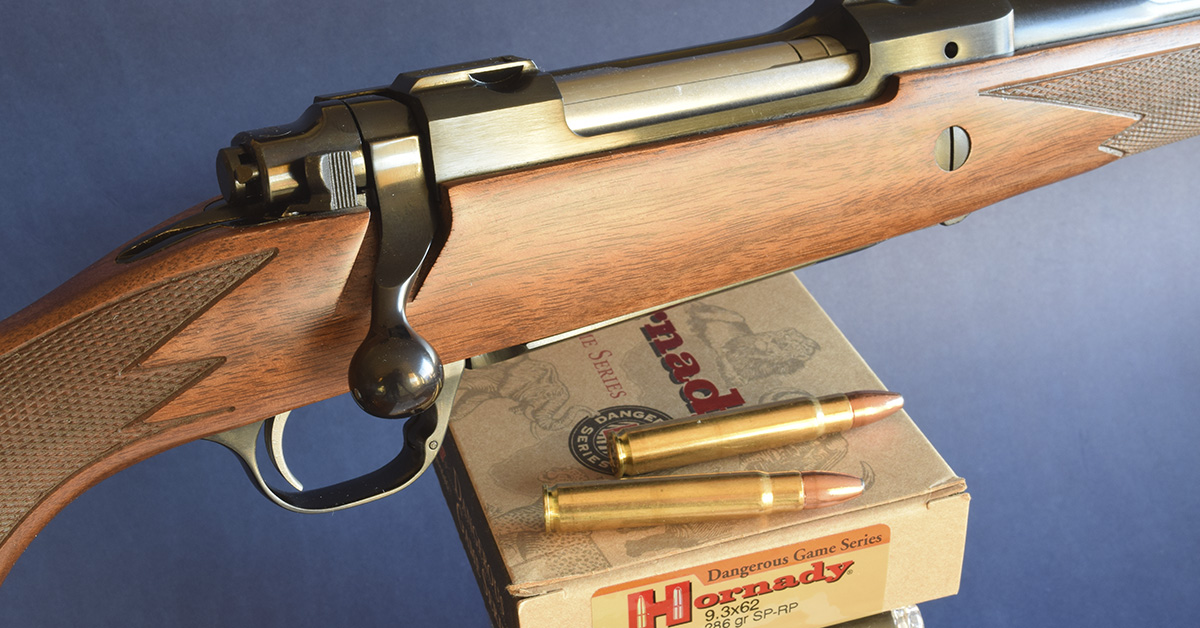
Ruger now lists seven Americans, including magnums, and just announced two versions of a new “Gen II” American.
For shooters who insist on rifle-stocks of wood, Boyds Gunstocks sells finished replacements for Ruger American stocks. They come with all necessary hardware. I’ve found them easy to install.
In 1982, Ruger courted the autoloading centerfire market with its Mini-14 rifle in .222 and .223. Later versions chambered the 6.8 SPC, .300 AAC, and 7.62×39. The SR and AR series followed.
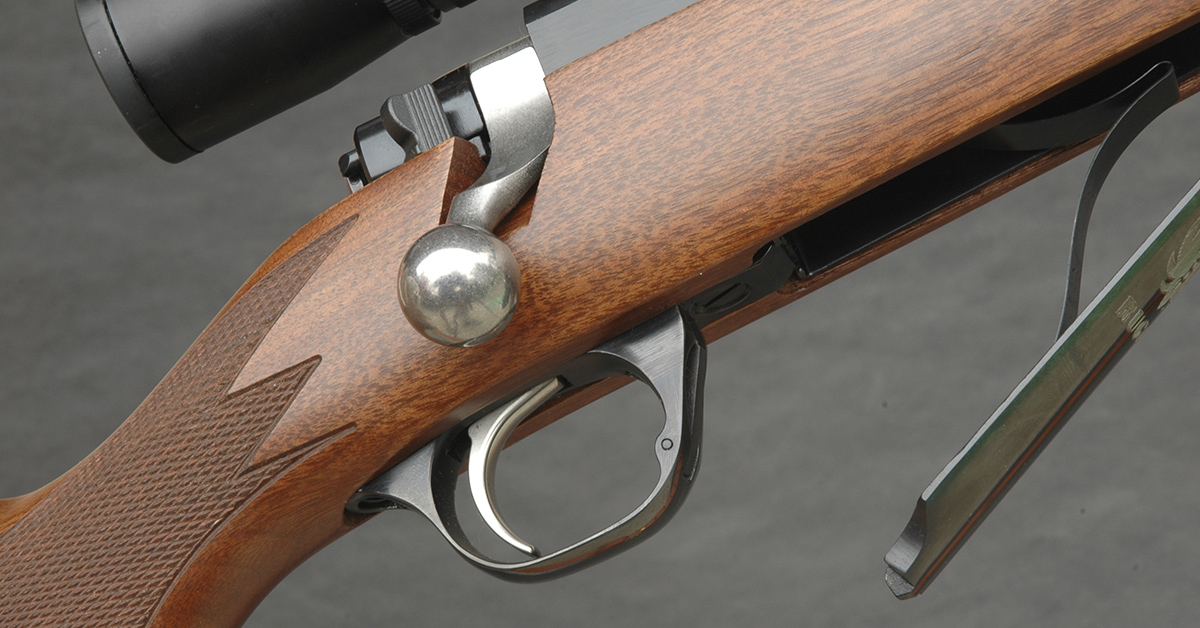
My allotted space here precludes even brief mention of all that’s notable in Sturm, Ruger’s first 75 years. Standout products include the Mini-14 rifle (from 1982) and Red label shotgun (produced 1977-2011), also the Ruger Precision Rifle, or RPR (from 2015), and Marlin lever rifles (introduced 2021, after Ruger bought the brand pursuant to a bankruptcy judgment against Remington).
Excepting the fine Marlin rifles now shipping, Ruger’s focus has shifted of late, from firearms of traditional design — full-size SA and DA revolvers, walnut-stocked hunting rifles — to feed a brisk demand for small handguns. Of course, the company must heed the market.
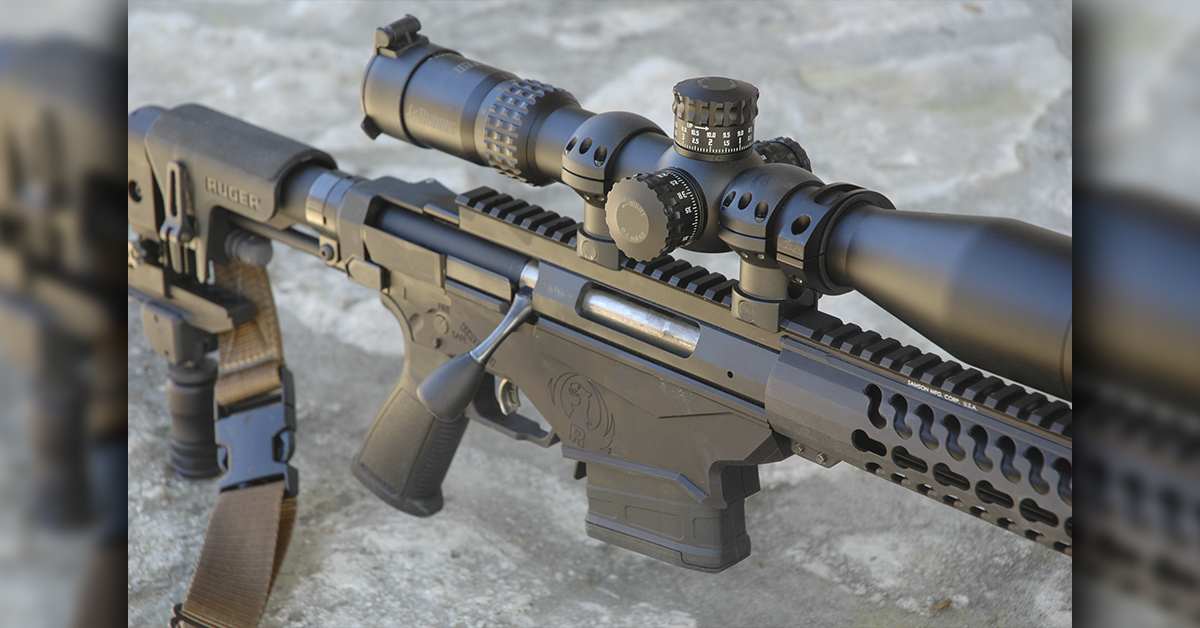
I still carry Ruger rifles afield. On luckless days, I recall the many times a Ruger gave me or my hunting partner the edge…
- When a mule deer buck bounced from a tangle of fir at timberline and tumbled to my 7×57 No. 1, and when a prairie whitetail fell at 250 yards to another No. 1 in .303 British.
- When a bull moose sped off through thick forest, then paused as I dropped prone to find an alley under boughs, and there threaded a bullet from my 77 in .300 RCM.
- When a Cape buffalo at 20 yards in long grass took a softnose from Tamar’s 77 African in .375 Ruger, galloped off, then slid on its nose in a cloud of yellow dust.
- When a big whitetail tarried just long enough to tag with my 77 in the then-new 6.5 Creedmoor, and when Janice fired my Ruger American prototype in .300 Winchester to down her first pronghorn.
Bill Ruger passed on July 6, 2002. But his vision in firearms design, with his pioneering work in their manufacture, refreshed an industry that still takes inspiration and direction from the company he and Alex Sturm started with a stamped steel pistol in 1949.
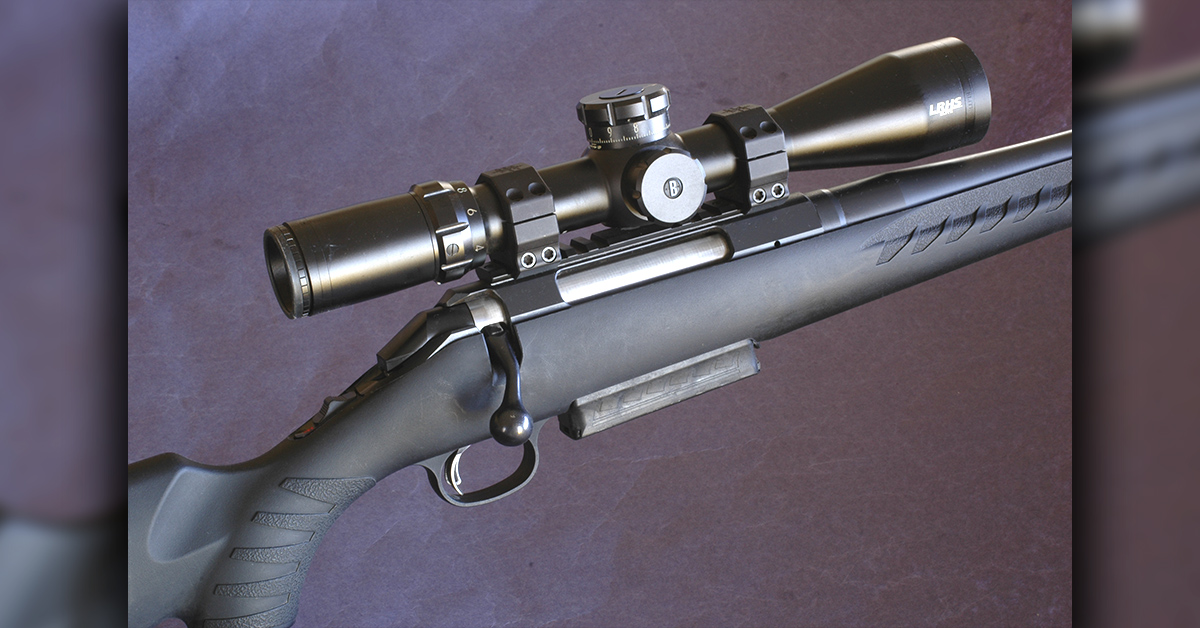
A Peek Inside
Newport, New Hampshire is a small town with a big factory. Ruger’s Pine Tree Castings brick-and-glass face is plain, of a style decades past. But inside, aisles long as football fields cleave rows of gleaming CNC machines, amber machine oil splashing their windows and high-speed cutters. Computer screens blink; tool arms rotate, lift and position. Parts tumble free or are pulled carefully then racked.
“Lost wax” investment casting, a process Bill Ruger pioneered in firearms manufacture, happens in another facility, a hike distant. Blue, lentil-like pellets are melted to form a pliable wax molded into facsimiles of gun parts. Several layers of “mud” then coat each wax core, hardening as a rough shell. But inside, the mud has taken the precise contours of the wax. After curing, the wax is melted out to ready the new mold for metal. In that step, furnaces bigger than mainframe computers spit sparks as thick-muscled men in sleeveless shirts and hard-hats tilt fat caldrons to pour white-hot liquid steel into ranks of molds wheeled through the smoke. After cooling, giant shakers break the molds from the parts. Cutters finish the job. Time in final machining is much reduced by the close tolerances held in the molds.
Barrels are produced from short, thick-walled tubes that feed through a massive hammer-forging machine that pounds them under tremendous pressure around hard mandrels with rifling in reverse. The floor vibrates; the noise is thunderous. Slender, rifled barrels half again longer than the blanks emerge.

